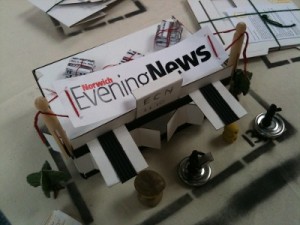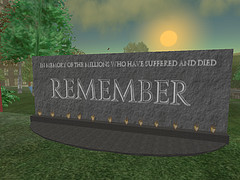In 1985 American literary critic Jane Tompkins published a book, Sensational Designs: The Cultural Work of American Fiction. It was an attempt to attract critical attention to novels – often bestsellers – that had been traditionally ignored or even panned by the canon-makers who dominated literary criticism. It represented an opening up of “low” art to “high” critical modes. Among other books, it looks at Harriet Beecher Stowe’s Uncle Tom’s Cabin not just as a sentimental novel but as a persuasive political text that swayed the hearts and minds of Americans everywhere. It credits it with an important role in the Civil War – that of getting the word out and making it cool to be anti-slavery.
Tompkins talks about bestselling fiction as cultures speaking to themselves. Harry Potter and Twilight and Dan Brown’s works aren’t just bestsellers because they have a good story or they’re wonderfully written – if anything, they suceed despite that. What those books all do is take a central cultural dilemma and work it out in a safe, controllable way, helping to assuage the fears and worries of millions of readers and allowing them to reimagine the world with those conflicts resolved.*
Journalists are just as much a product of the cultures we write in and about, no matter how much we’d like to pretend otherwise sometimes. Perhaps the only exception is Wikileaks, because it’s outside national cultures; even so, its journalism work is subject to the same forces and influences as the rest of us.
Yesterday Wikileaks published, simultaneously with the Guardian, the New York Times and Der Spiegel, 92,000 logs from the war in Afghanistan that show the conflict at its most naked and basic. There are too many of the documents for the picture to be clear at this stage – there’s still a lot of work to be done – but the three news organisations have already done a great deal of work towards stitching coherent narratives together to make stories for easy consumption.
But the story resists consumption. There is no easy line through the logs that builds a narrative anyone can agree with; the documents are sticky and difficult and present problems that are simply insurmountable. As Wikileaks fouder Julian Assange said today:
The real story is that it is war, it’s one damned thing after another. It’s the continuous small events, the continuous deaths of children, insurgents, allied forces (…) This is the story of the war since 2004 and like most of the accidents that occur in the world, they are as a result of cars not buses, most of the deaths in this war are the event of the everyday squalor of war, not the big incidents.
But that’s not a comfortable story that gets us to sleep at night. It’s not our brave boys or the illegal war or Private Jessica Lynch, whichever version of the story you read. The good guys aren’t so great and the bad guys aren’t easily identifiable and everything is blurred right down to the level of individual decisions that might or might not be right, on the ground, in that time and place. That’s not a story that assuages any fears or resolves any conflicts neatly or easily.
And for that reason, I agree with @jayrosen_nyu. He says:
I’ve been trying to write about this observation for a while, but haven’t found the means to express it. So I am just going to state it, in what I admit is speculative form. Here’s what I said on Twitter Sunday: “We tend to think: big revelations mean big reactions. But if the story is too big and crashes too many illusions, the exact opposite occurs.” My fear is that this will happen with the Afghanistan logs. Reaction will be unbearably lighter than we have a right to expect— not because the story isn’t sensational or troubling enough, but because it’s too troubling, a mess we cannot fix and therefore prefer to forget.
Journalism, like literature, is a culture speaking to itself, defining itself, creating and reinventing itself. Whether fiction or non-fiction, a good story has to be in the right place at the right time in order to make real change within a culture. Yesterday’s Afghanistan log disclosures aren’t safe, or pretty, or easily understood. They don’t tell a story that anyone can nod along to. They don’t lend themselves to easy summation or even a coherent narrative. They remind us that the situation is far more complicated than we normally imagine. And I don’t think that’s a story we want to tell ourselves right now.
* Because those are all relatively recent works, it’s hard to pinpoint precisely which conflicts they’re resolving and how. If I had to: Harry Potter is dealing with anti-technology backlash, fear of rapid change, desire for an underlying order in a world without metanarratives, and the fact that the good and the bad guys all look the same these days; Dan Brown is dealing with surveillance and secrecy fears as well as the terror of the destruction of metanarratives and the worry that there might actually be no underlying purpose for anything; and Twilight is tackling changing and confusing rules and mores in male and female sexuality and transposing them into a “safe” traditional narrative where everyone knows the rules. But it’ll take a good few years yet before the picture is as crystal clear as, say, the way Peyton Place’s popularity came from how it dealt with fears and growing understanding of human sexuality in the wake of the Kinsey Report.




